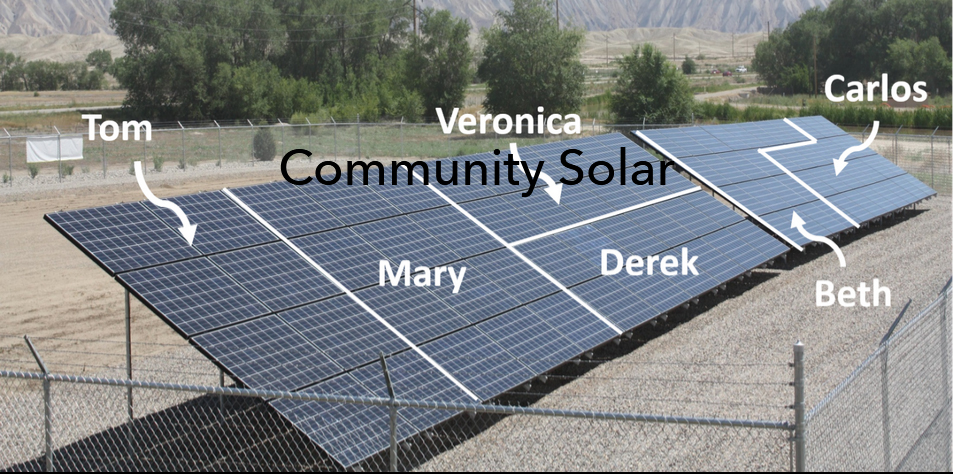

Community Solar is where peopls in a community share solar panels generating electricity by renting. Customers who have a ProRate / CLEP based bill, will have a dramatically better experience with solar overall, and the finances for community solar are greatly enhanced.
One feature of solar that many people overlook is that the power that is produced is often most valuable for the time of day when it is produced than simply what the electricity itself is usually (statically) priced at. This is because utilities have peak demand periods and during those periods, the wholesale price spikes, so merely paying for the solar panel energy delivered at a flat rate does not actually represent the actual value brought by that energy.
Here, we explore these dynamics.

The following quote from a May 2015 publication implicitly defines Community Solar, presents arguments for it and outlines how it is financed and administered:
“Since 2010, residential solar installations have added more than 2,500 megawatts of clean energy -- Enough to power more than two million homes for a year. Yet nearly 75% of residential rooftop space is prohibited from participating in individual programs such as net metering due to structural constraints or ownership issues. Community solar aims to resolve this impediment, providing restricted residents access to solar in a virtual fashion. An administrating entity will cover the cost of installing a large solar array and recoup these costs by allowing co-investors to buy into the project. Co-investing participants then receive the benefits from their share’s solar energy production. ”
This same report points out that i) there are Community Solar [CS] programs in 19 states including Washington, D.C. and ii) D.C.’s CS regulation requires that instantaneous excess generation is not “stored for future use” by the owners of the CS, but instead is given to the low-income community. These last two sentences are significant because they concern decisions made by utility regulators based upon due consideration for the passing the non-participant test.